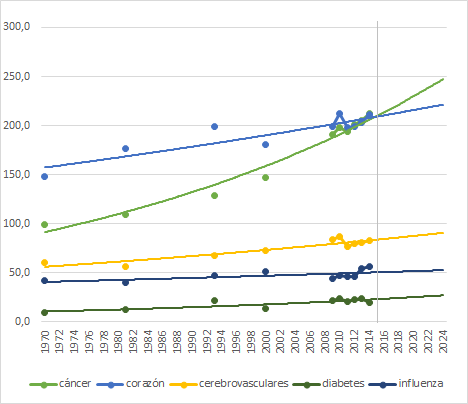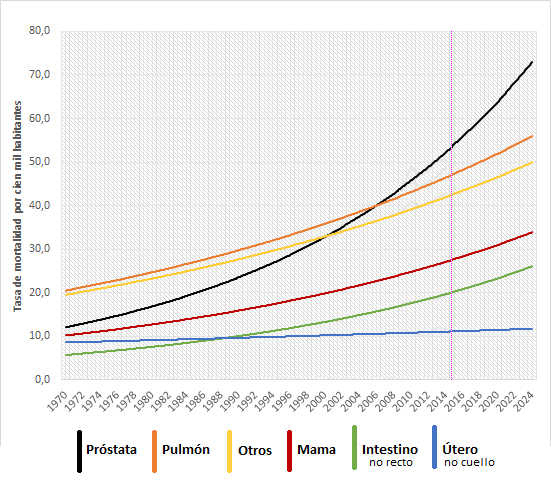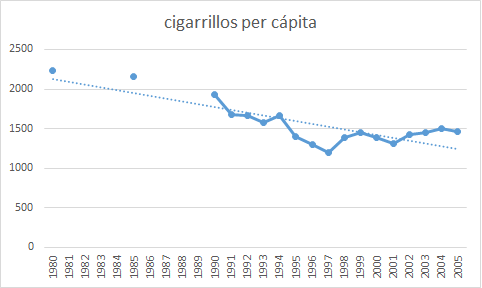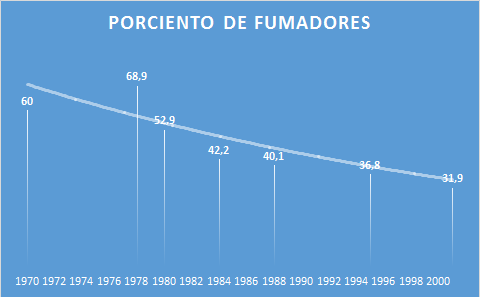Cancer in Cuba: The Other Side of the Tortilla
Erasmo Calzadilla
HAVANA TIMES – In 2012, following an accelerated rise, Cancer became the leading cause of death in Cuba. In 2013 the upward climb continued, and in 2014 it climbed with even greater might: 23,729 lives cut short over a 12 month period – 747 more than the previous year.
Cancer is a problem worldwide but Cuba is among the countries most affected. We have the second highest rate in Latin America with a mortality rate of 143 deaths per 100,000 inhabitants, surpassing by a wide margin the mean for the continent.
Like all illnesses, cancer has a political edge. In this post I’d like to reflect on this aspect because I believe that the rise of the disease here has been influenced by a certain political context.
All nations have “tumors” that can grow unchecked and menace their health. Ours is an excessively enlarged State that has already killed off its “enemies” and has no mechanism left to moderate its excesses. Other ills are associated with this modern brand of hypertrophy: paternalism, bureaucracy, the excessive influence of a professional elite in the process of decision-making, developmentalism (the world view of that elite) and other remains of “coloniality”.
What does this have to do with the increase in cancer?
When in 2012 it finally became impossible to cover up the fact that cancer was on the gallop, the Cuban State-Party-Government through its monopoly communications media and with the support of professionals of dubious ethics, offered us a distorted view of the problem.
The principal lies or half truths expressed by the media apparatus were:
- Cancer is growing because other illnesses are receding thanks to the efforts of the health ministry. This was true during the first years of the Revolution, but during the current era none of the causes of death are diminishing. As the attached graphic shows, all of them are advancing but cancer is doing so more rapidly.

- The current rise of the disease has been fostered by a set of unhealthy practices and bad habits: At the moment of enumerating the causes of the epidemic, the “Apparatus” places emphasis and lays responsibility on the unhealthy practices of everyday Cubans: smoking, alcoholism, obesity, poor diet, unprotected sex and excessive sun exposure. Not even in passing do they mention the State’s role in releasing an extremely high level of carcinogens into the environment, as we’ll see in the next post.
- The great alibi of an aging population. Without a doubt, this aging is the principal cause of cancer’s rise. Nonetheless, it’s easy to demonstrate – as I did in a previous post – that an important quantity of annual deaths couldn’t be blamed on that social phenomena. In order to understand that cancer isn’t just a problem of the elder age group, suffice it to say that it constitutes the first cause of death in the following age ranges: 1 – 4 years; 15-49 years; 50-69 years; and 70-79 years. It descends to second place in the age ranges of 5-14 years and over 80. These facts are impressive in and of themselves.
4 The pharmacological focus designed to confront the disease – centered largely on the development of biotechnical medications destined for treatment rather than on diagnosis or prevention – is a correct direction and is yielding good results. The statistics demonstrate that the above is false: the novel and highly promoted super drugs are not controlling anything.
These are dangerous, practically criminal lies, because they distort the problem and keep us from designing adequate strategies. I have dedicated several posts to straightening these out and today I’d like to concentrate on one of them: the unsafe practices and damaging habits of our population are a central factor in the galloping outbreak of cancer in Cuba.
There is a well-known relationship between certain habits and specific types of cancer:
- Tobacco use – malignant tumors in the respiratory tracts.
- Alcoholism, excessive red meat consumption and diet poor in fiber, vegetables and fruit – digestive cancers.
- Unprotected sex – malignant lesions in the organs of the reproductive system.
- Obesity and alcoholism – uterine and breast cancer.
- Disproportionate sun exposure – skin cancer
To evaluate the role of these factors in the rise of cancer we should ask ourselves two things:
- Are these damaging habits increasing in Cuba in a way that might provoke such an impressive surge of the disease?
- Are the kinds of cancer that are most prevalent in Cuba those that we would expect to find according to these risk factors?
Let’s look at this in greater detail:

The above graph shows us the evolution of the most terminal and fastest increasing types of cancer in the country: prostate cancer; lung cancers (including bronchial and tracheal cancer); breast cancer in women; intestinal cancer (except rectal); and a fifth category termed “other” where we would include a very diverse group of tumors that don’t contribute much individually but which acquire important weight when seen as a set. Last year these five horsemen of death carried 16 thousand people to their grave in Cuba – more than 70% of cancer deaths. The rise of cancer is concentrated in these 5 areas. I propose that we analyze them on a case-by-case basis while asking ourselves about each one’s association with some bad habit or detrimental daily practice.
Prostate cancer: 2,819 deaths in 2014; 19 more than in 2013
There is no explicit tie between this cancer and any vices or harmful practices. It was previously believed that riding bicycles over streets full of potholes could predispose men to prostate cancer, but that hypothesis has been losing ground. It’s known that poor diet, smoking and drinking alcohol increase the probability of suffering from this, but the associations are weak.
Lung cancer: 5444 deaths in 2014; 221 more than the previous year.
Lung cancer is the King of death in Cuba. When we hear it spoken of, we immediately think of tobacco use. But has this practice really been growing in Cuba? Official statistics indicate otherwise. How can we associate an accelerated growth of the disease with a habit that has been decreasing exponentially over the last four decades?


Breast cancer in women: 1,536 deaths in 2013; 91 more than in 2013
This type of cancer is the second deadliest for women. It’s associated with an excess of internal and external estrogens, the use of certain deodorants and the consumption of oral contraceptives; its ties to any other unwise or toxic habits are weak. I haven’t been able to obtain hard data, but based on simple observation it doesn’t seem to me that Cuban women are now any more obese or alcoholic than they were at the onset of the 80s when the mortality rate from breast cancer was half of what it is today.
Intestinal cancer: 2,177 deaths in 2014, 96 more than the previous year.
There’s a close relationship between red meat consumption and the probability of suffering from diverse digestive cancers. During the Special Period there was a brusque descent in the consumption of all types of meat, followed later by a slow increase. Nonetheless, intestinal cancer continued its upward climb unperturbed over all that time, with an extremely high rate of growth that varied between 30 and 35% per decade. Moreover, though it’s true that the typical Cuban diet is often poor in fiber and vegetables, these culinary traditions haven’t changed and couldn’t be the cause of the current epidemic.
Finally, alcohol had been cited as dangerous for the intestine. Do we drink more now than before? I don’t have the statistics, but based on simple observation it doesn’t seem like it.
Uterine cancer (not including cervical cancer)
Unprotected sexual relations favor HPV (Human Papillomavirus) contagion, the principal cause of cervical or uterine cancer. This type of malignant lesion is frequently mentioned by functionaries despite the fact that it has been quite well controlled in our country (mortality rate: 8 deaths per 100,000 inhabitants) Other varieties of uterine cancer not associated with HPV or with unprotected sexual relations have a greater mortality rate (11 deaths per 100,000) but nonetheless receive less attention from the press.
Skin cancer: 425 deaths in 2015, 28 more than the previous year
I didn’t include this in the top five because it’s among the least lethal. However, it enjoys a lot of press and popular attention, possibly because it’s one that hinges on individual responsibility to a great extent. Its incidence and mortality rate (3.8 deaths for each 100,000 inhabitants) is not only low, but also has barely varied in the last few years. Ultraviolet rays are not, then, an integral part of the spectrum that is finishing off the Cubans.

Conclusion:
The elite from the State-Government-Party and the Health Ministry are two wings of the same bird. They cooperate closely in the task of evading responsibility in the face of the surge of this disease. If lying to the media becomes necessary in passing – What’s the problem? Blame for cancer’s rise is assigned to far off and abstract factors like the sun, the contaminants that inevitably accompany the nature of development, the aging population…and of course Liborio, our prototypical Cuban: a sinful creature who practices unsafe sex.
In addition, their world view and elitist perspective cause them to favor a hard line pharmacological approach focused on the design of sophisticated and expensive biotech products for treatment (with little or no results), at the same time overlooking prevention and dissemination.
Later on I’ll talk about why I think that the State-Party-Government apparatus is a principal factor responsible for the epidemic, right behind the leading role of the aging population.
——
Notes:
- It would be unfair not to say that we owe the rise in life expectancy – one of the indirect causes of the rise in cancer – in large part to the will and efforts of the State-Government-Party and of the health facilities. The intention of this work isn’t to heap manure on them but to avoid having them tear down with their feet what we built with our hands.
- All of the graphics were designed using Windows Excel with the lineal and exponential Tendency Line tool.
3. The statistics on cancer in Cuba were taken from the annual health ministry statistics especially the latest edition.





